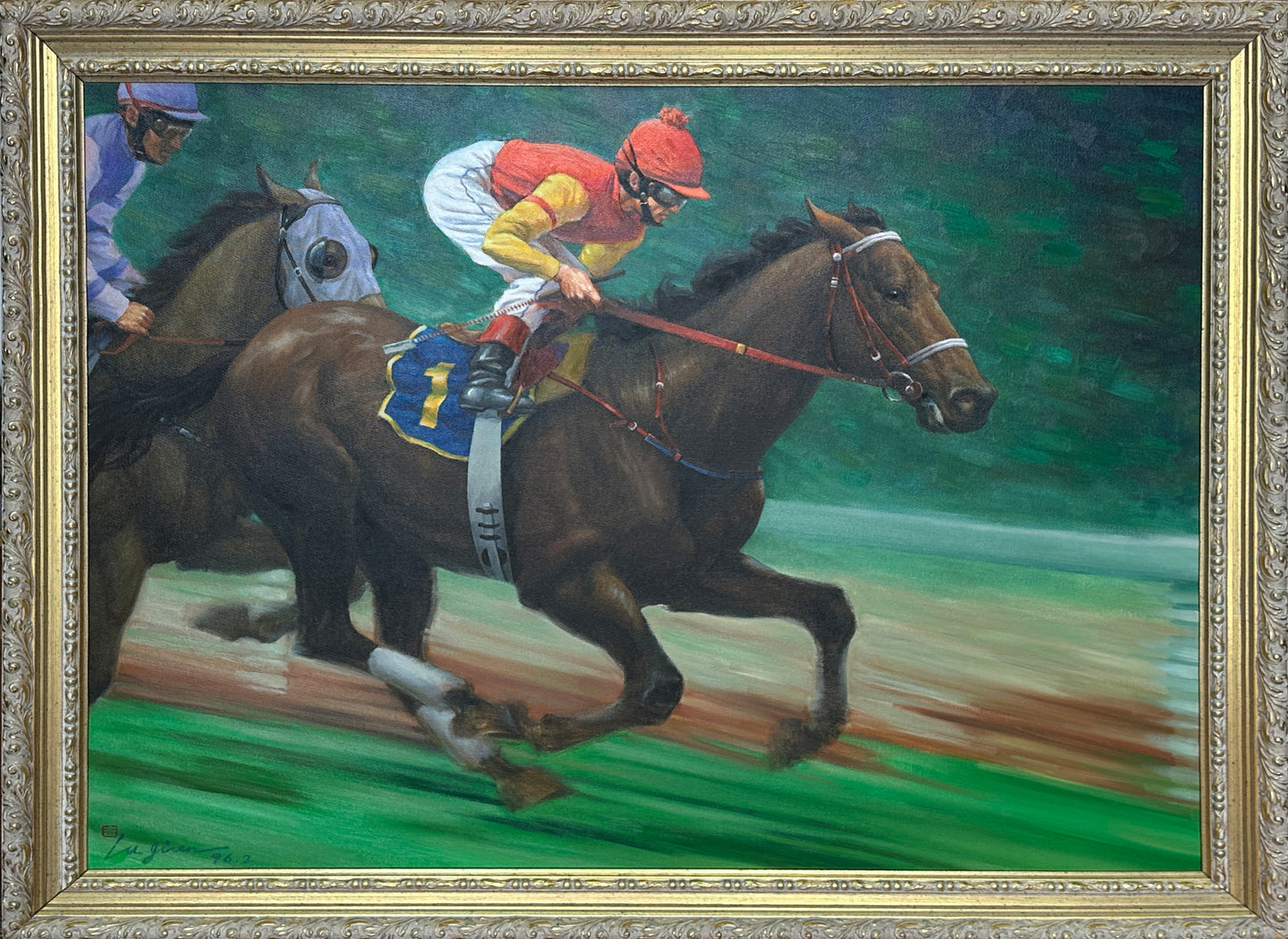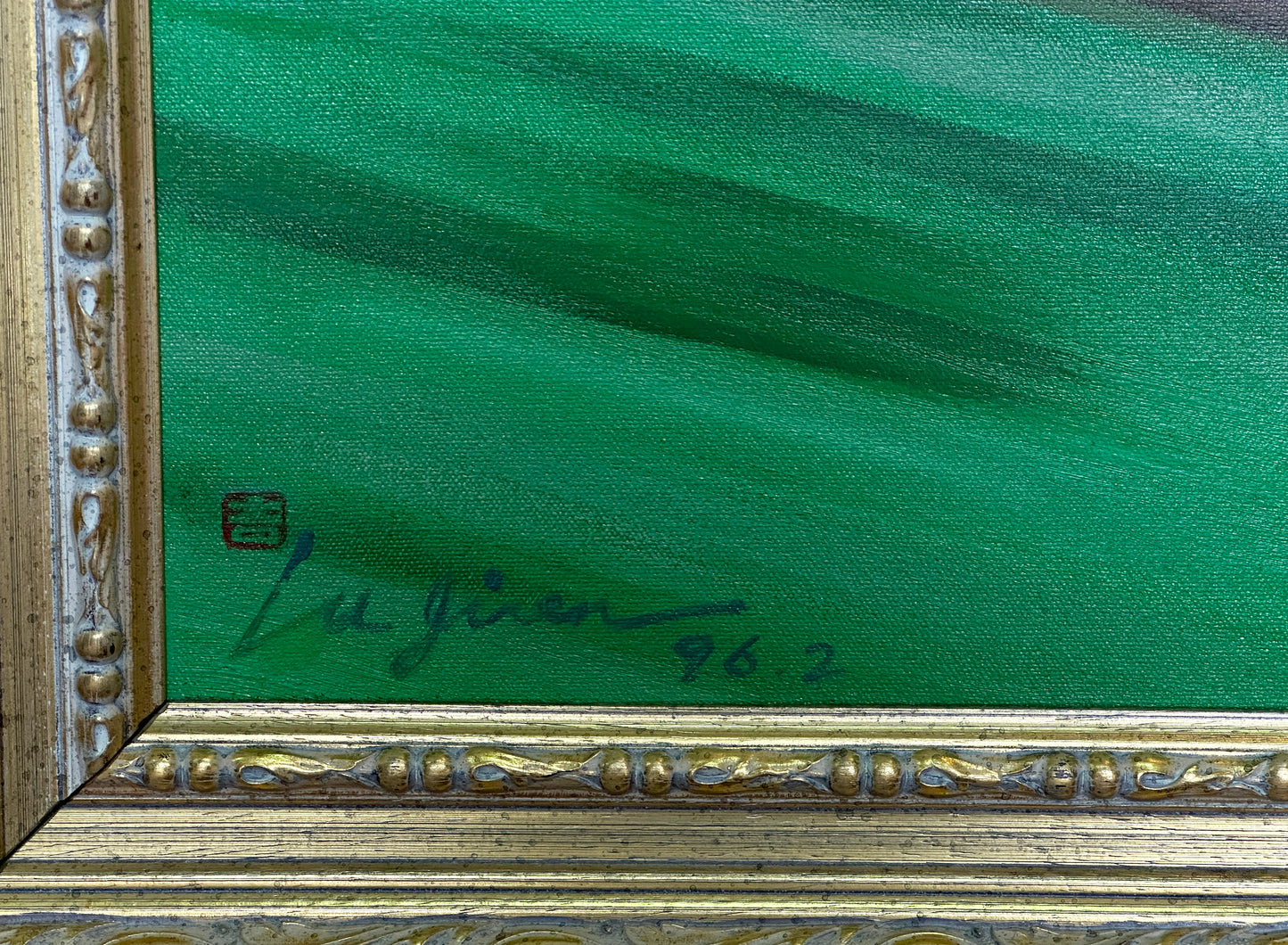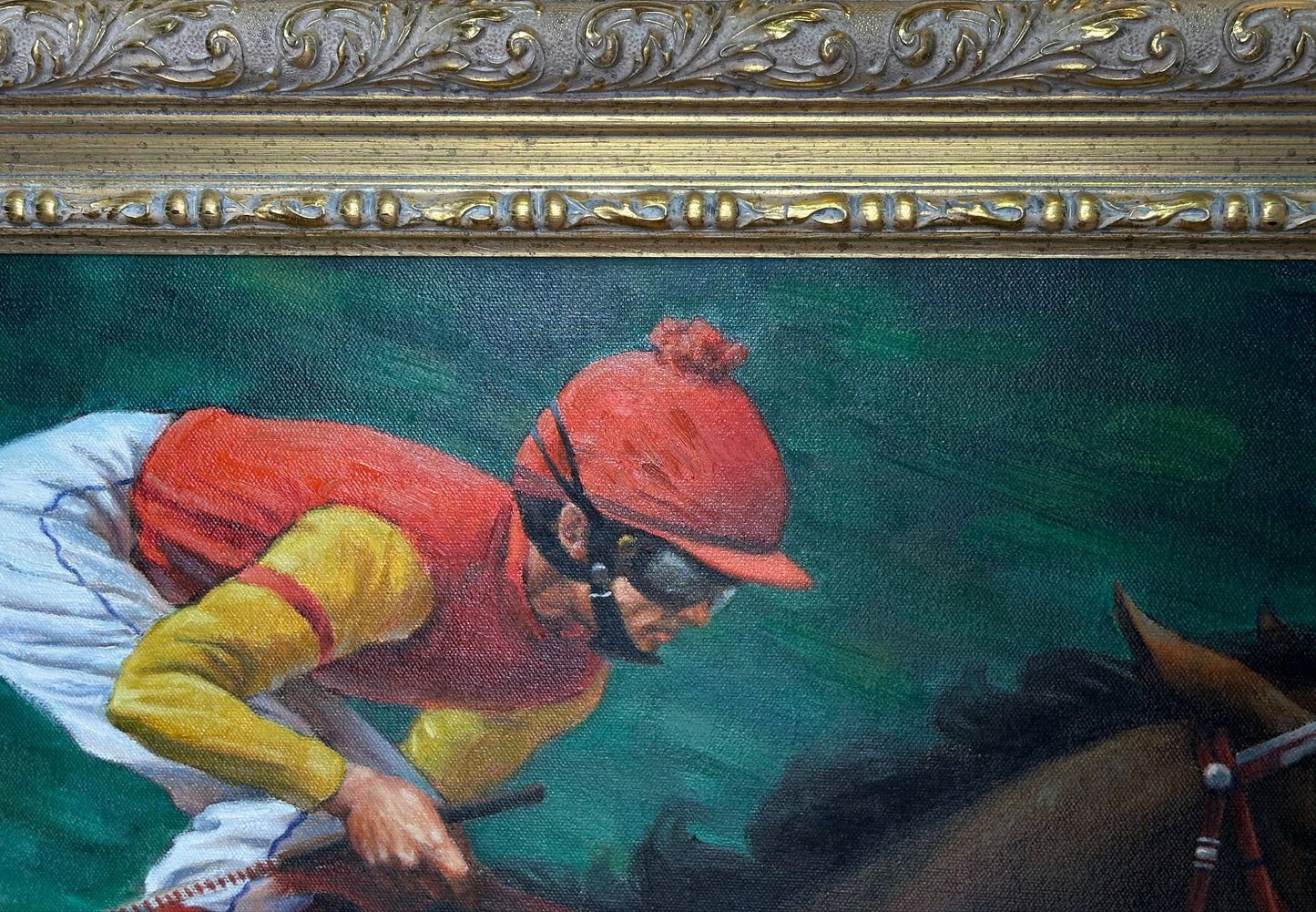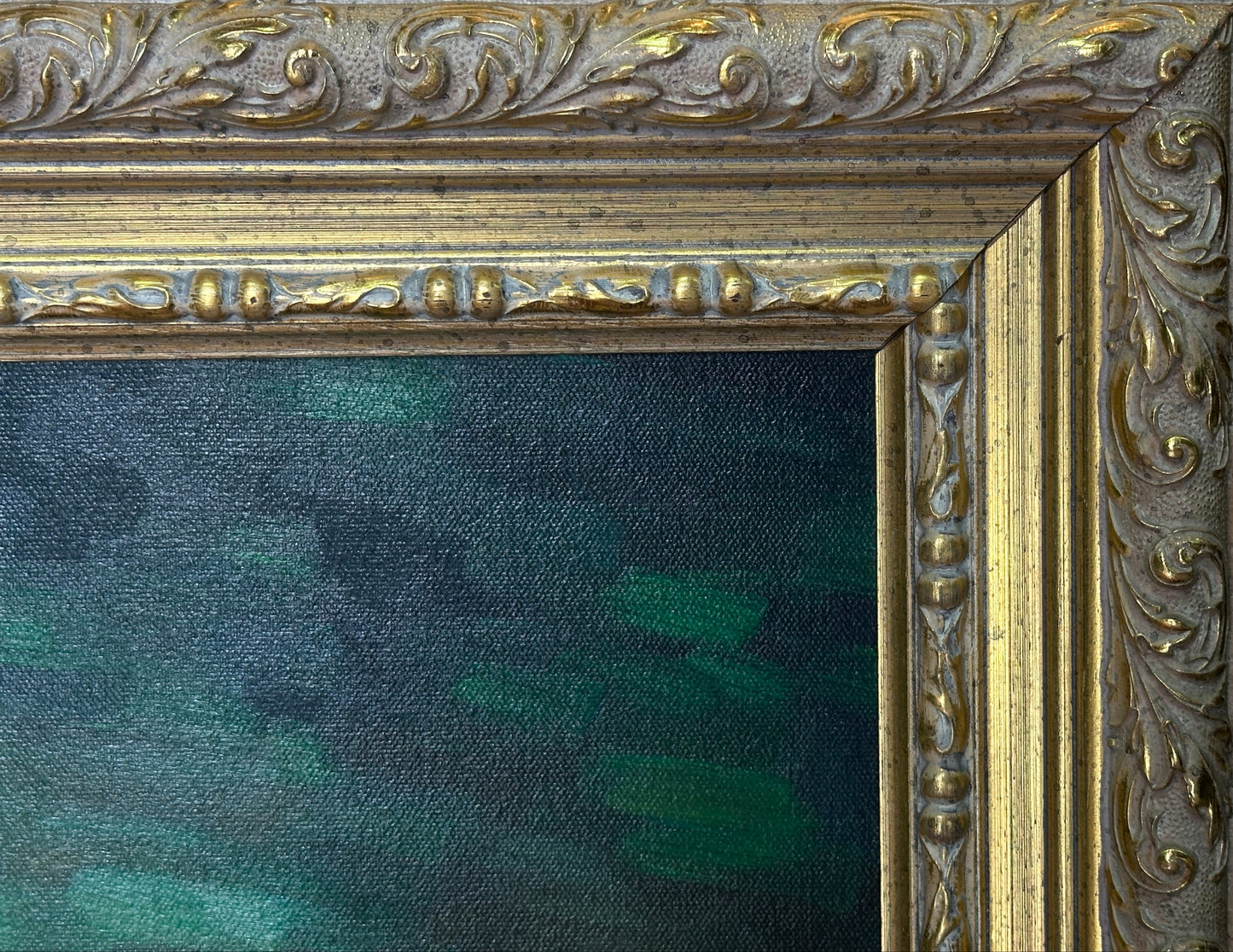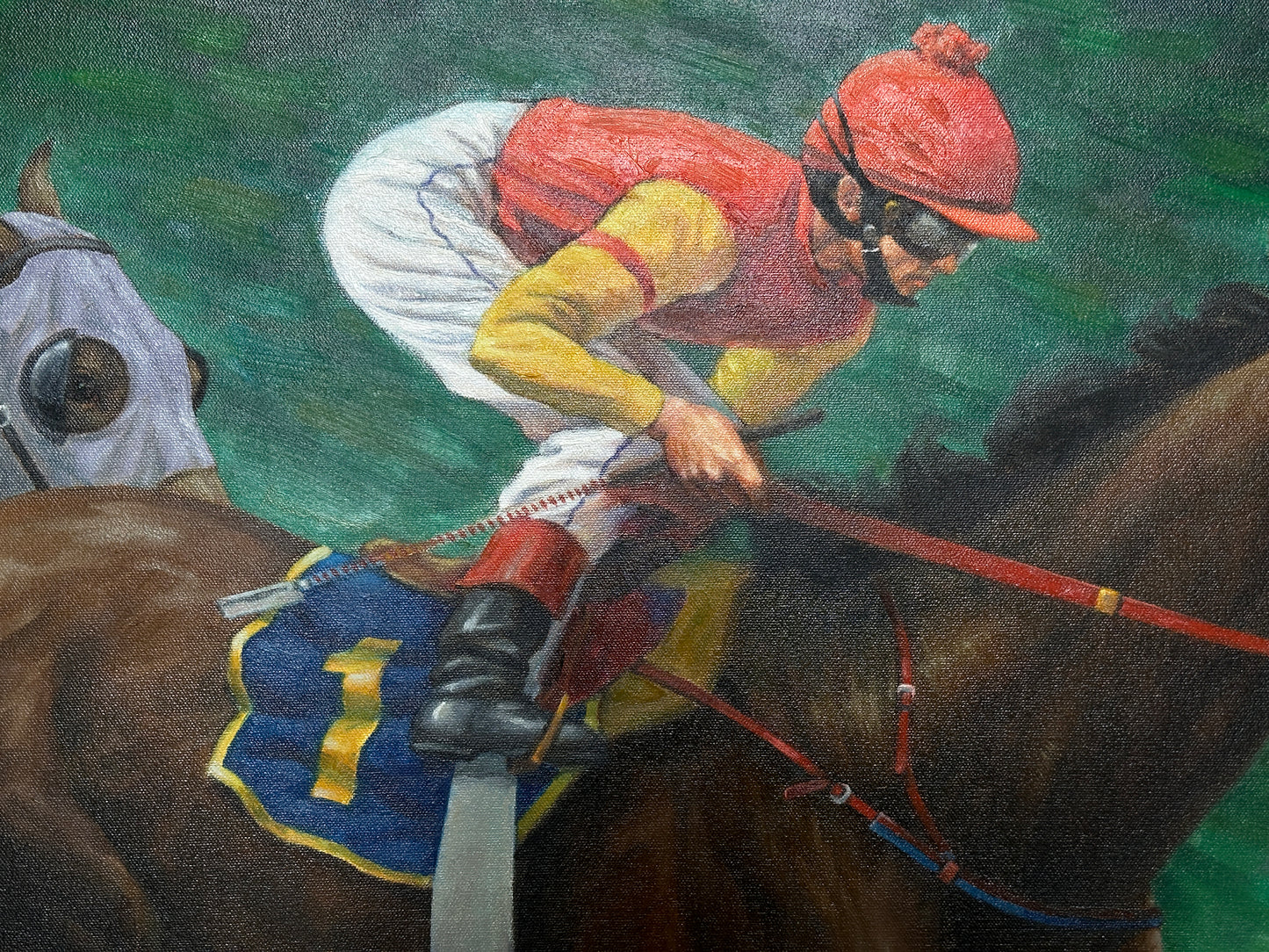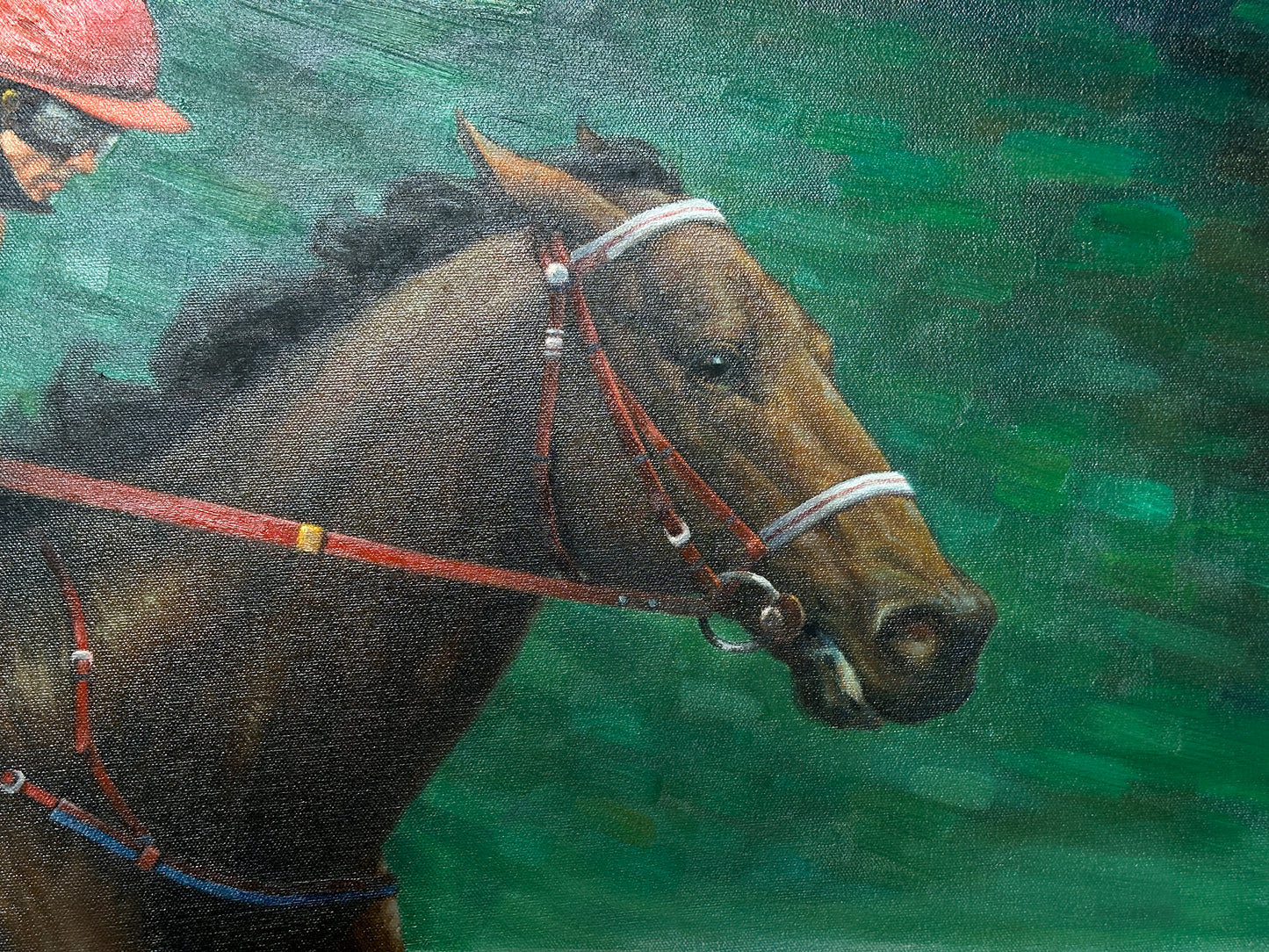bqt.art
The Winner, 1996
The Winner, 1996
Couldn't load pickup availability
Share
Artist: Lu Jiren 呂吉人
Title: The Winner | 一馬當先
Materials: Oil on canvas
Size: 89 x 114 cm | 35 x 45 in (Framed)
Rarity: Unique
Medium: Painting
Signature: Hand-signed by artist
Condition: Excellent
Frame: Yes
The oil painting The Winner by Lu Jiren vividly captures the intensity, athleticism, and drama of horse racing. Through its dynamic composition, vibrant colors, and expressive brushwork, the painting conveys the exhilaration of competition and the fleeting moment of triumph. Below is an in-depth exploration of its artistic elements and emotional resonance:
---
1. Composition and Subject Matter
The painting centers on a horse and jockey in mid-stride, capturing the climactic moment of a race. The jockey, clad in vibrant red and yellow, leans forward in perfect synchronization with the powerful motion of the horse, symbolizing the unity between rider and animal. The horse’s body, taut and muscular, exudes strength and determination, while its forward-leaning posture conveys speed and motion.
The composition is carefully crafted to emphasize the action and excitement of the race. The focus on the leading horse and jockey gives the painting its title, “The Winner” while the background figures—another horse and jockey—enhance the sense of competition. The angled positioning of the horses creates a diagonal thrust, drawing the viewer’s eye across the canvas and intensifying the feeling of movement.
---
2. Use of Color
The painting employs a vibrant and contrasting color palette to heighten the drama of the scene. The jockey’s red and yellow attire stands out boldly against the deep brown of the horse’s coat and the lush green of the racetrack background. These warm colors symbolize energy, passion, and victory, reinforcing the central theme.
The background features blurred greens and browns, which suggest motion and speed while providing a sense of place without distracting from the foreground. The blending of colors in the background contrasts with the finely detailed rendering of the horses and jockeys, further emphasizing the central figures.
---
3. Brushwork and Texture
The painting uses a combination of tight, realistic brushwork and looser, impressionistic strokes to create a dynamic visual contrast. The horse and jockey are meticulously detailed, with careful attention paid to the textures of the horse’s coat, the folds of the jockey’s clothing, and the reins. This level of detail enhances the realism and draws the viewer’s focus.
In contrast, the background is painted with broader, more fluid strokes, creating a sense of motion and speed. The slightly blurred effect evokes the rush of air and the fleeting nature of the moment, giving the painting a kinetic energy that mirrors the subject matter.
---
4. Light and Atmosphere
The lighting in the painting is soft and natural, illuminating the horse and jockey while leaving the background slightly shadowed. This subtle use of light helps to highlight the central figure, creating a sense of depth and dimension.
The interplay of light and shadow on the horse accentuates its musculature, emphasizing its power and grace. The gleam of light on the jockey’s helmet and the horse’s tack adds a touch of realism and suggests the presence of sunlight, further grounding the scene in reality.
---
5. Emotional and Symbolic Resonance
The painting captures more than just the physical act of racing—it conveys the emotion and symbolism of competition. The intense focus of the jockey, the determination in the horse’s stride, and the blurred background all suggest a singular goal: victory. The viewer can almost feel the pounding of hooves, the tension in the reins, and the adrenaline of the moment.
Symbolically, the painting represents the culmination of effort, training, and teamwork. The unity between the jockey and horse reflects the harmony required for success, while the trailing competitors remind us of the effort and perseverance needed to emerge as “the winner.”
---
6. Framing and Presentation
The ornate frame adds a sense of grandeur and timelessness to the painting, elevating the subject matter and lending it a sense of importance. The intricate detailing of the frame complements the meticulous rendering of the horse and jockey, enhancing the overall presentation.
---
Conclusion
“The Winner” is a masterful depiction of the energy and emotion of horse racing. Through its dynamic composition, vibrant colors, and skillful brushwork, the painting captures the fleeting moment of triumph and the raw power of the sport. It celebrates the beauty of competition and the bond between human and animal, leaving the viewer with a sense of admiration for the dedication and strength required to achieve victory. It is a work that resonates both visually and emotionally, inviting the viewer to share in the exhilaration of the race.
